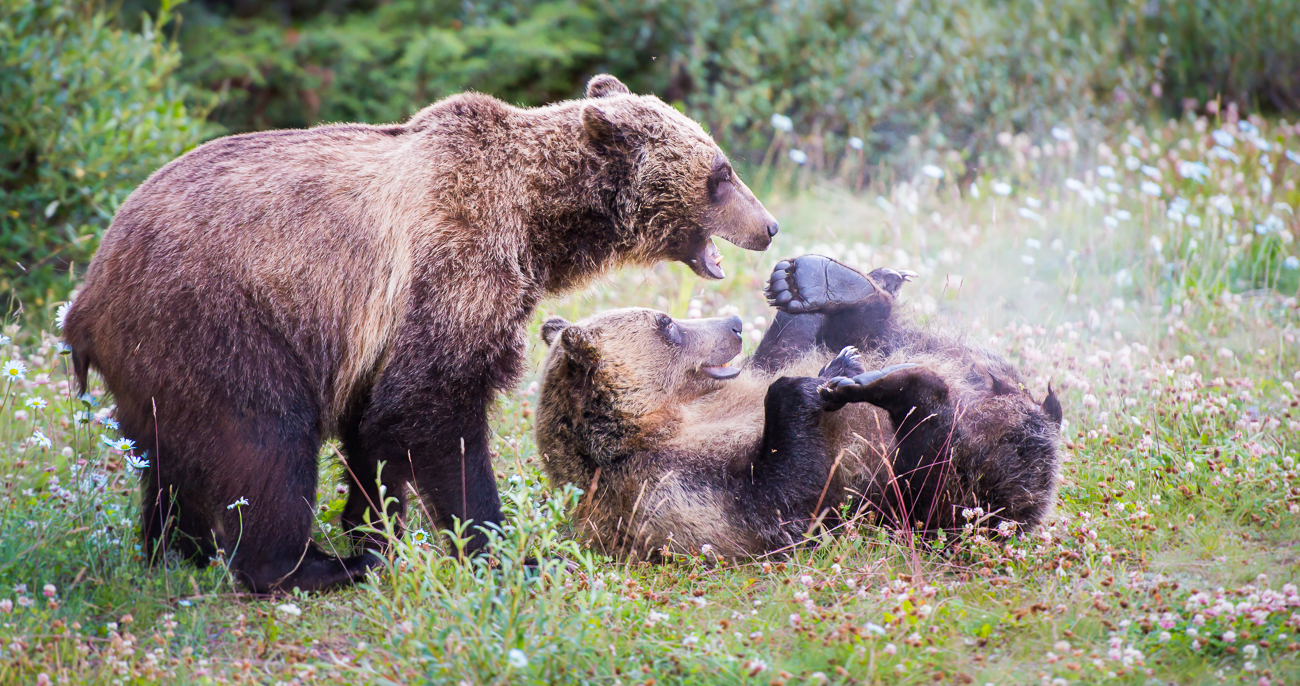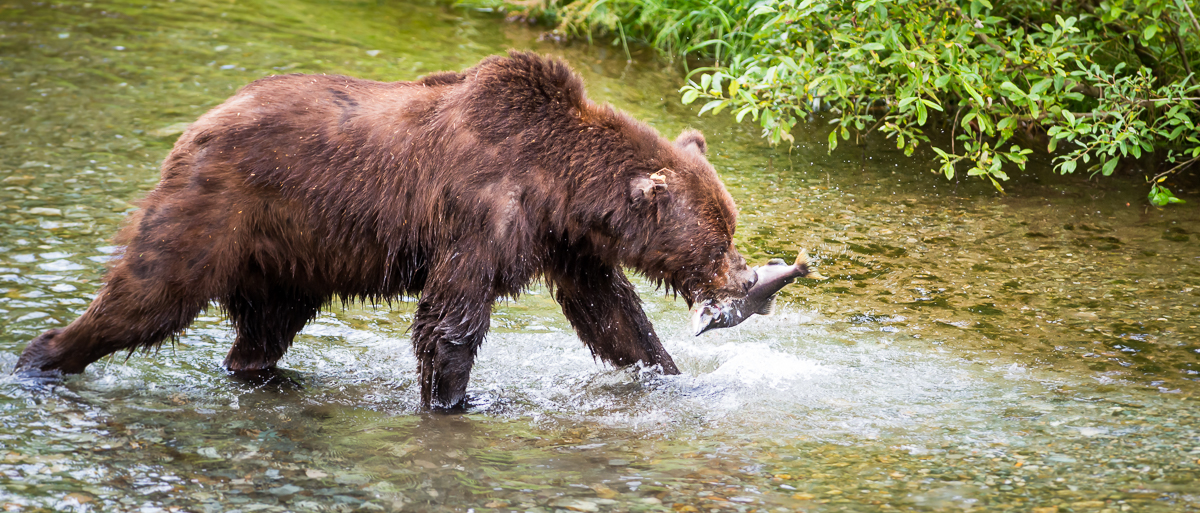The Context of it All
Chapter Two
Look, these bears are neat. They’re different from how we think a bear should act.
But at the end the day, they’re still grizzlies, right? Still at the top of the food chain? Their lives aren’t that hard, right?
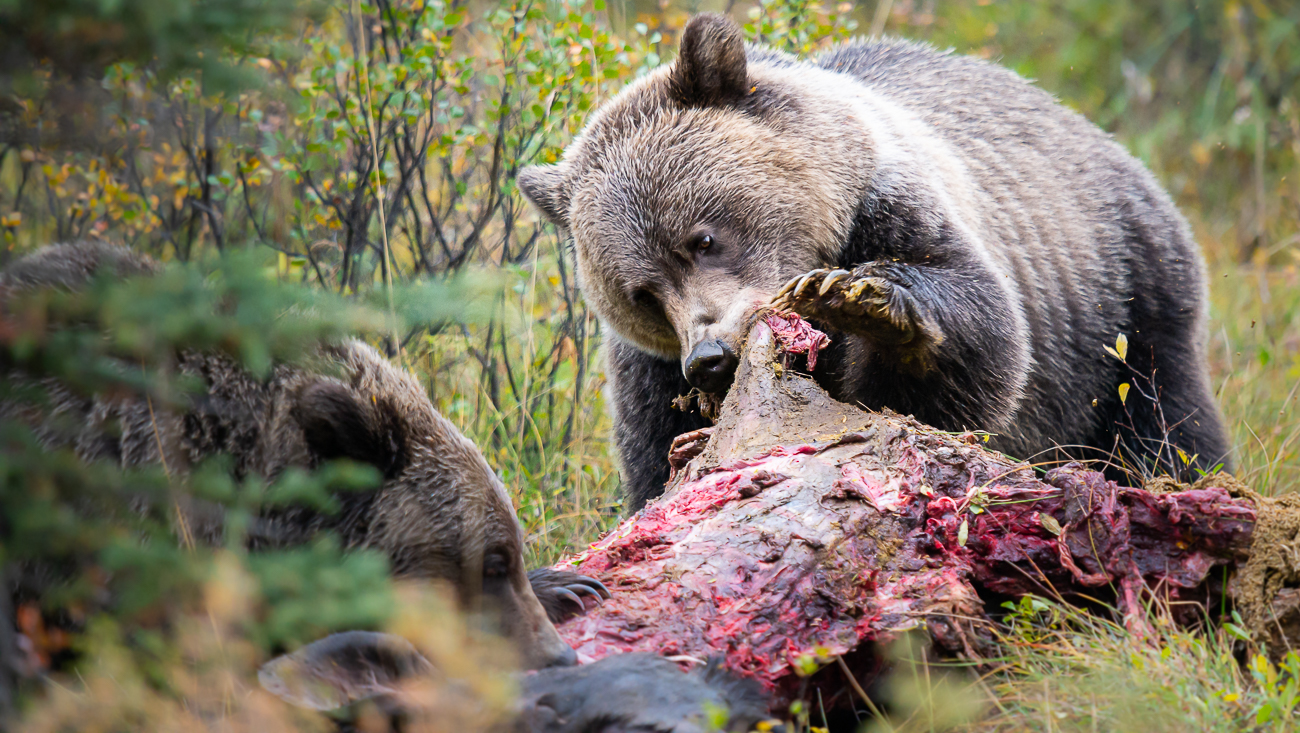 I mean, these claws! These teeth! This massive hump of muscle, which seemingly gives grizzlies the power of superman to move a thousand-pound moose and rip open its rib cage like you or me might open a can of tomatoes. They’re all tools that scream raw power, especially when paired with a tricked-out kit of evolutionary superpowers: height, speed, smell.
I mean, these claws! These teeth! This massive hump of muscle, which seemingly gives grizzlies the power of superman to move a thousand-pound moose and rip open its rib cage like you or me might open a can of tomatoes. They’re all tools that scream raw power, especially when paired with a tricked-out kit of evolutionary superpowers: height, speed, smell.
But here’s the thing: what we see isn’t always what we get. Our eyes – our assumptions – can deceive us. We can trick ourselves into knowing something is simple, when the simple truth is, nothing’s ever simple.
How so?
Well, for starters, these claws aren’t really made for killing, but for roots. I mean, even when cooking vegan food, you need a decent knife, right Chef Marc Lepine? And you also need a decent set of chewers if the goal is to digest this dirt-based, um, deliciousness? So, yeah, a grizzly bears’ teeth also aren’t necessarily designed for killing.
And as Takota Coen will tell you, to mind a ‘farm’ as big and as unruly as the Robson Valley? Yeah, muscles are key.
Look: weight, muscle, height, speed and smell are all helpful when the craving is Chinook sashimi or moose carpaccio – and definitely helpful during a grizzly bear-equivalent of a pandemic-induced fight for the last roll of toilet paper at Costco.
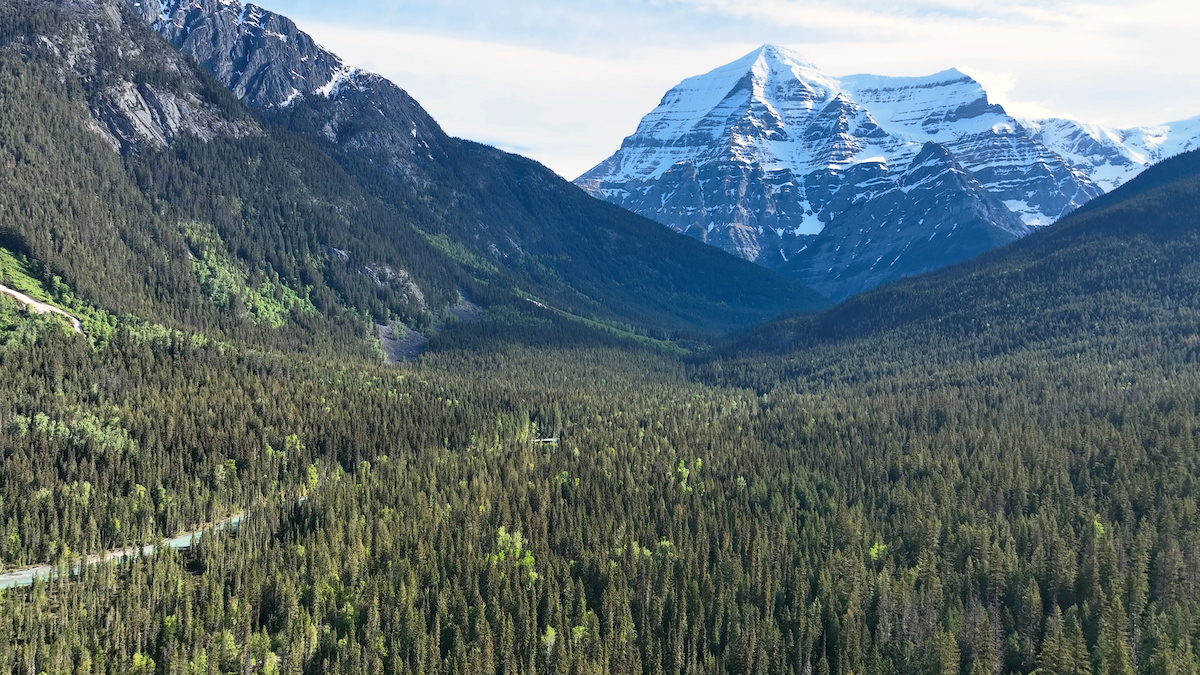 But there’s more to the story; it’s hard to make a living on this land.
But there’s more to the story; it’s hard to make a living on this land.
For an animal to be 80-90% vegetarian, or more, and still have the power to sit atop the food chain? Well, it means work. Hard, hard work – work they know how to do because it’s what their home has given them; it’s what their upbringing has taught them.
Every spring when these two wake? It’s go time. Who cares if it’s snowing? It’s time to move and find what didn’t make the winter – and get to it before the competition finds it. Maybe cache it for a rainy day, or eat it now, because all this moving? It costs the only currency that matters here: calories.
Each day? It’s one less to bank the calories needed to survive another year. Not enough calories? Forget being hungry next spring, there won’t be a next spring.
And while scavenging is fine, it’s hardly a career. Dandelions? That’s mint…while it lasts.
Grubbing to find insects and ground squirrels between seasons? It’s better than nothing – but not by much.
An elk calf or two are nice, but it’s more like a decent appy than a main course.
Sorry, elk.
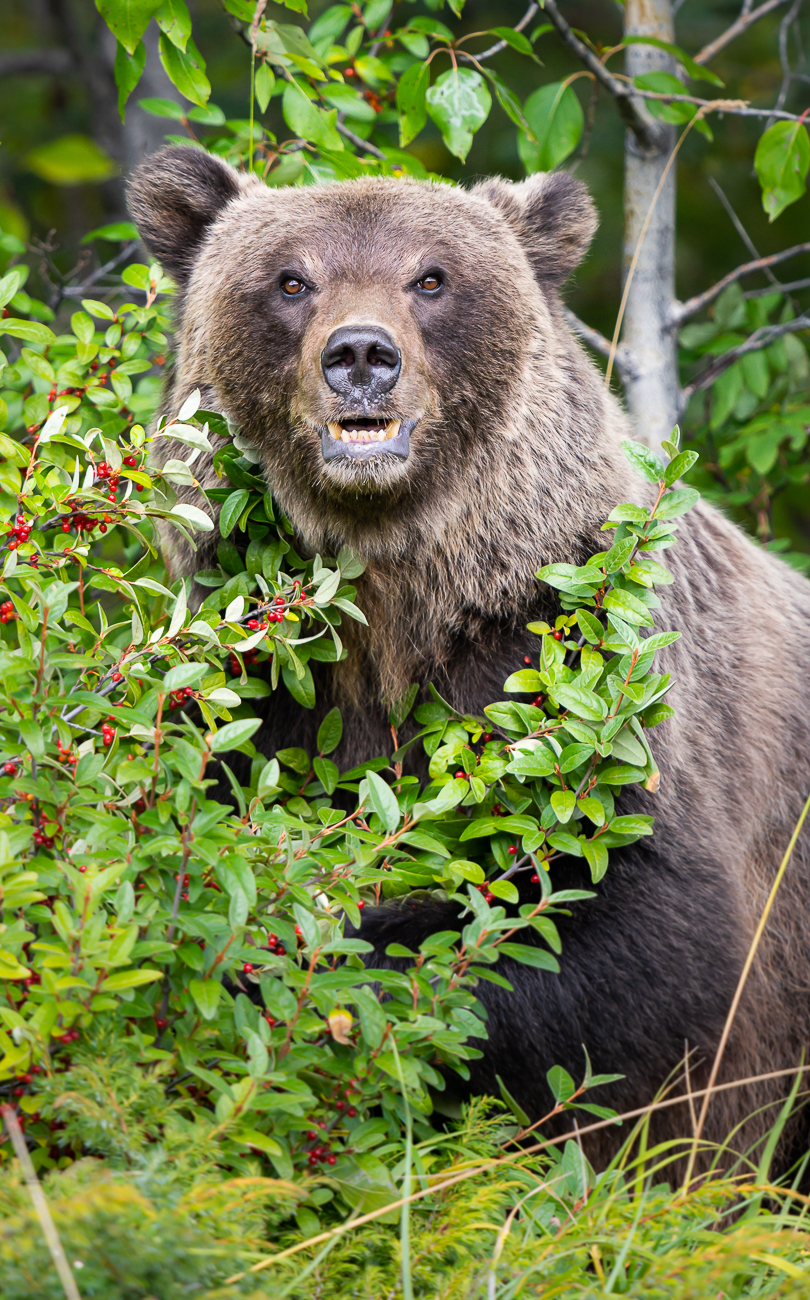 Berries though? It’s not some stop-gap job. This gig’s a must – even if berries aren’t enough to retire on. It’s blue collar all day out here.
Berries though? It’s not some stop-gap job. This gig’s a must – even if berries aren’t enough to retire on. It’s blue collar all day out here.
Even when this place is dripping berries, these are just two bears amongst many. Many black bears that is.
And when berry season is over? It’s all about whitebark pine seed – a tiny, hard-to-find, hard-to-access seed found in a rather drab tree way, way up the mountainside. And the whitebark pine? They’re not doing well and without them, we don’t think grizzlies can survive the winter months.
Which might make you think Mount Robson isn’t much more than nature’s version of Squid Game – without the reward. After all, for all of this work – for all of the kilometres walked, all of the battles won, all of the calories banked – these two might only grow to about 120 kilograms.
What? You thought our two bears weighed 500 kilograms?! Even Chocolate, one of the biggest grizzlies ever found in Mount Robson capped out at about 250 kilograms.
You see, Mount Robson Provincial Park isn’t Alaska or the Great Bear Rainforest on Canada’s west coast – habitat stocked with seemingly limitless, calorie-rich fish. The local context – the ecosystem-specific food chain – in the Great Bear dictates that coastal habitat can support more, bigger grizzlies than Mount Robson and the Canadian Rockies because of food supply.
Which is interesting, but now get this:
Just because coastal grizzlies are bigger than our two bears, doesn’t mean they would necessarily excel – or take over – if we were to transport them to the Robson Valley.
Why? Again, it’s the local context.
With time, a coastal grizzly moved to Mount Robson might learn to live on grubs and berries – and deal with its suddenly shrinking body mass. But not right away. Likely not in time.
A coastal grizzly’s first instinct upon arriving in the Rockies would likely be to do what it’s always done and visit the local fishmonger, promptly discovering that this ecosystem’s fish stocks aren’t quite as robust as those on the coast.
That might cause a relocated coastal grizzly to panic. And though it has size on its side, not knowing how to manoeuvre around Mount Robson’s landscape would likely give our two grizzly siblings a decided advantage in the Rocky Mountain equivalent of the Hunger Games.
And whether we’re talking hypotheticals or real-life struggles, in nature – as in our world – context matters.
It matters when trying to understand what works and what doesn’t work in nature. It matters when trying to understand the food chain and why decisions made in the Rockies or on the coast, or in the places where we live can impact the food web everywhere.
And because each local context – each ecosystem context – is different, understanding how history and home has shaped different ecosystems and different communities – Mount Robson and Canada – really matters when trying to use science to advance a better balance for the needs of people and nature everywhere.
